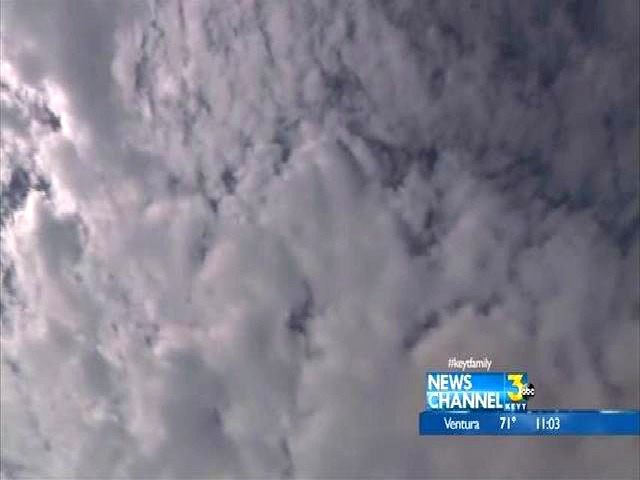With this year’s strong El Niño tending to skirt California and drenching the Pacific Northwest, Los Angeles County just went all-in to revive a controversial cloud seeding program to squeeze out every last drop of precipitation from late season rain showers.
The winter rain season in California usually runs from October through March, but El Niño years tend to push the end of the season out about six weeks into early May. Even though Southern California hasn’t gotten the drought-busting torrential rain windfall some expected from El Niño, federal scientists with the National Oceanic and Atmospheric Administration say California heavy rain and snow may still arrive.
Southern California is still locked in the grip of a 5-year drought with the local mountain snowpack at just 77 percent of normal for this date.
With the clock running down for more storms, officials just unleashed cloud-seeding as a weather-modifying strategy to hopefully squeeze out more moisture during rainfall, according to the Los Angeles County’s Department of Public Works.
Department spokesman Kerjon Lee told KTLA News that in past, cloud-seeding had produced an average of an additional 1.5 billion gallons of storm water annually, creating enough drinking water for about 36,000 local residents. With the season
With Central and Northern California having gotten more heavy rain in recent weeks, Lee argued that “We’re giving Mother Nature a hand” in Southern California. He expects the Department to spend about $550,000 this year on cloud-seeding to capture and store the equivalent of water that would cost $3.2 million if purchased from the Metropolitan Water District of Southern California.
Cloud seeding was invented at General Electric’s Schenectady, New York Research Lab in 1946 and it is now practiced extensively in dry regions around the globe.
But the practice is controversial, because the most common chemical used for cloud seeding is silver iodide. The compound has an NFPA 704 health hazard rating of 2, because it can cause temporary incapacitation or possible residual injury to humans and mammals with intense or continued but not chronic exposure.
Los Angeles County suspended its cloud seeding program in 2009. But in response to Gov. Jerry Brown’s declaration of a “state of emergency” over California’s extreme drought, the LA Board of Supervisors voted last fall to reinstate the program.
Static cloud seeding involves spreading a chemical like silver iodide into clouds. The silver iodide provides a crystal around which moisture can condense. The moisture is already present in the clouds, but silver iodide essentially makes crystals to cause clouds to dispense more of their water.
Dynamic cloud seeding aims to boost vertical air currents, which encourages more water to pass through the clouds, translating into more rain. Up to 100 times more ice crystals are used in dynamic cloud seeding than in the static method. The process is considered more complex than static clouding seeding because it depends on up to 11 step sequence of events.
L.A. County ordered clouds were seeded over the San Gabriel Mountains from the Kinneloa West debris basin above Pasadena on March 7 and again on March 11. Officials hope that injecting tiny ice nuclei into rain clouds can increase precipitation by up to 15 percent, according to a report by KTLA News.

COMMENTS
Please let us know if you're having issues with commenting.